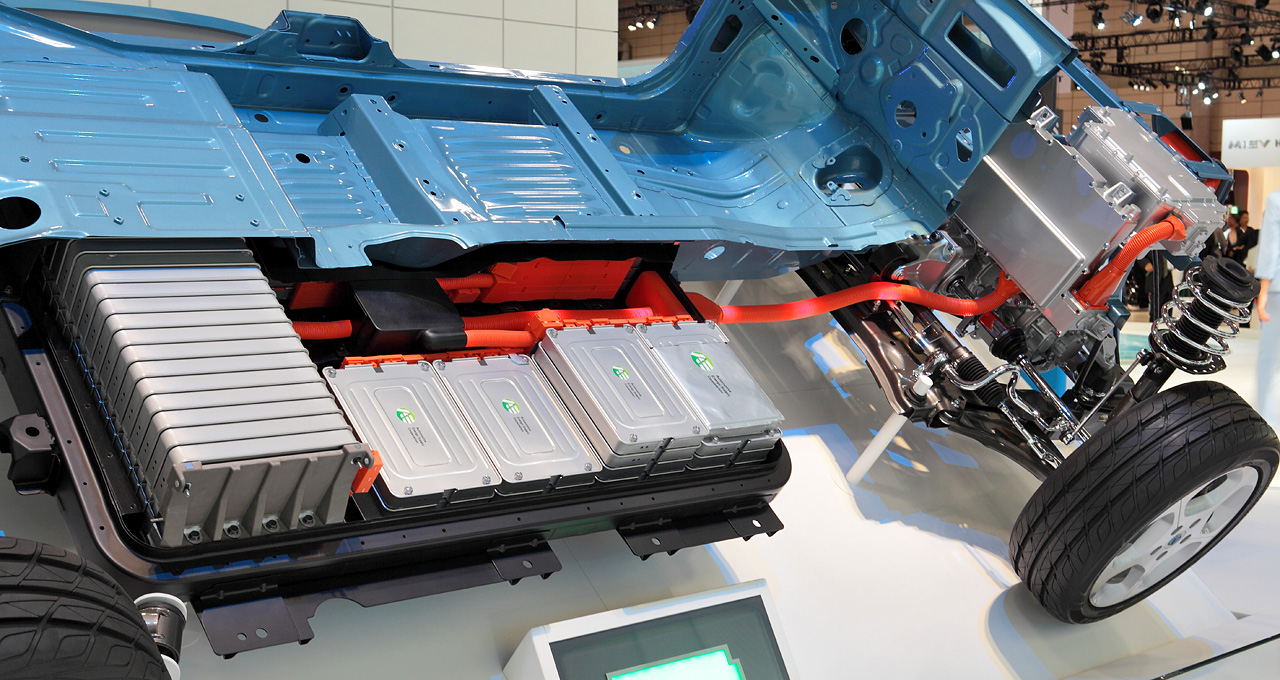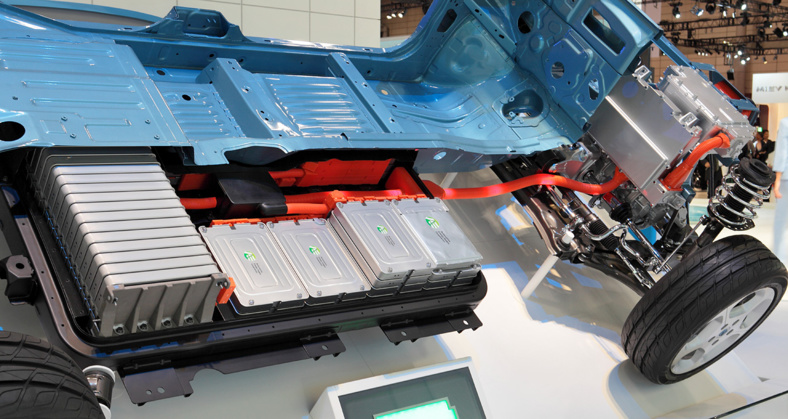This concept drove German automaker Daimler AG to launch of a new stationary storage business, leveraging its fully owned EV battery maker subsidiary Deutsche Accumotive in June last year. In partnership with companies that are experts in battery reuse, the automaker sells batteries to residential and commercial customers.
Experts are of the opinion that car auto makers are getting a lot more familiar with the electric grid. “Trust me, five years ago, no one in the auto industry knew anything about it,” said Simon Ellgas, senior advanced technology engineer at BMW of North America. At around the same time, car maker Nissan became the first EV maker to move beyond pilot-testing second-life batteries with the launch of a full-scale commercial business with a California-based startup. In that very same month, General Motors announced a new project testing used Volt batteries. And BMW conducted an 18-month pilot project about battery recycling and came up with new data showing that its used batteries can perform reliably in demand response events.
But are these attempts commercially viable for providing stationary power generation and power storage solutions? In a report on second life batteries market, research organization Navigant Research claims that in most modern cars – including electric cars, the battery packs in are usually warranted for 8 to 10 years and, after that period, most will have reduced energy storage capacity. Battery manufacturers expect that those batteries will retain 80% of the original capacity, on average. However most of the degraded batteries will be taken out of the cars at that point. These batteries taken out from vehicles serve the purpose of reusing them for stationary applications. The report also forecasts that the global second-life battery business will grow from $16 million in 2014 to $3 billion in 2035.
How such used but still capable batteries can be used for alternative power generation and storage, was demonstrated in a pilot project by French company Forsee Power in France in July 2015. Forsee Power manufactures customized energy storage systems and high-tech devices, and considered among the top in the field. The project was undertaken in collaboration with four other corporate - EDF, Mitsubishi Motors Corporation, Mitsubishi Corporation and PSA Peugeot Citroën. The project sought to optimize smart grid and Energy Management System by combining solar, electric vehicles, stationary storage using new and re-used batteries in bi-directional mode. The sophisticated battery system designed by Forsee Power used High voltage (330 volts) Energy Storage System made of Peugeot Ion, Citroen C-Zero and Mitsubishi iMiEV reused automotive battery pack. Low voltage (48 Volts) Energy Storage System was also set using new automotive batteries. The management of the project was done by Mitsubishi Corporation which also studied the possible business opportunities and the commercial viability of the project utilizing used batteries and electric vehicle. “The purpose of the project is to demonstrate efficient and economically feasible energy management practices based on the optimization of electricity storage, charging and generation technology with respect to existing demand,” said Mitsubishi Corporation.
French giant EDF was entrusted to study the energy-related business that utilizes used batteries and the electric vehicle and study and define the business model in the stationary re-use market with possible scope of commercial utilization.
The project started operations in September 2015 in France at Forsee Power’s Headquarters near Paris. Forsee Power was entrusted with the role of coordinating the entire project, designing and setting up of power lines, integration and operating the project.
The possibility of a business model being developed from this pilot project was also in the realm of roles for Forsee Power. “Way more than just a demonstrator using vehicles batteries in a building, it is the study of a realistic economic model: relevant and viable for any end users in multiple realistic consumption situations. The goal of this project is to increase the economic value of the batteries and postpone their recycling at a later time, decreasing a little more its impact on the environment,” said Christophe Gurtner, founder and CEO of Forsee Power. Analysts say this project could pave the way for a lower cost solution for people with home solar systems and/or for home DC stored EV charging system, as well as save money by increasing the life of car batteries.
Having gained confidence from the project, Forsee Power ants to take the technology to the wider market and hence it plans to launch an Initial Public Offering soon. The companies associated with the project believe that this step by Forsee Power would help to propel the technology and the concept for greater commercial use by companies as well as individuals looking to find ways to reuse batteries for alternative energy.
Experts are of the opinion that car auto makers are getting a lot more familiar with the electric grid. “Trust me, five years ago, no one in the auto industry knew anything about it,” said Simon Ellgas, senior advanced technology engineer at BMW of North America. At around the same time, car maker Nissan became the first EV maker to move beyond pilot-testing second-life batteries with the launch of a full-scale commercial business with a California-based startup. In that very same month, General Motors announced a new project testing used Volt batteries. And BMW conducted an 18-month pilot project about battery recycling and came up with new data showing that its used batteries can perform reliably in demand response events.
But are these attempts commercially viable for providing stationary power generation and power storage solutions? In a report on second life batteries market, research organization Navigant Research claims that in most modern cars – including electric cars, the battery packs in are usually warranted for 8 to 10 years and, after that period, most will have reduced energy storage capacity. Battery manufacturers expect that those batteries will retain 80% of the original capacity, on average. However most of the degraded batteries will be taken out of the cars at that point. These batteries taken out from vehicles serve the purpose of reusing them for stationary applications. The report also forecasts that the global second-life battery business will grow from $16 million in 2014 to $3 billion in 2035.
How such used but still capable batteries can be used for alternative power generation and storage, was demonstrated in a pilot project by French company Forsee Power in France in July 2015. Forsee Power manufactures customized energy storage systems and high-tech devices, and considered among the top in the field. The project was undertaken in collaboration with four other corporate - EDF, Mitsubishi Motors Corporation, Mitsubishi Corporation and PSA Peugeot Citroën. The project sought to optimize smart grid and Energy Management System by combining solar, electric vehicles, stationary storage using new and re-used batteries in bi-directional mode. The sophisticated battery system designed by Forsee Power used High voltage (330 volts) Energy Storage System made of Peugeot Ion, Citroen C-Zero and Mitsubishi iMiEV reused automotive battery pack. Low voltage (48 Volts) Energy Storage System was also set using new automotive batteries. The management of the project was done by Mitsubishi Corporation which also studied the possible business opportunities and the commercial viability of the project utilizing used batteries and electric vehicle. “The purpose of the project is to demonstrate efficient and economically feasible energy management practices based on the optimization of electricity storage, charging and generation technology with respect to existing demand,” said Mitsubishi Corporation.
French giant EDF was entrusted to study the energy-related business that utilizes used batteries and the electric vehicle and study and define the business model in the stationary re-use market with possible scope of commercial utilization.
The project started operations in September 2015 in France at Forsee Power’s Headquarters near Paris. Forsee Power was entrusted with the role of coordinating the entire project, designing and setting up of power lines, integration and operating the project.
The possibility of a business model being developed from this pilot project was also in the realm of roles for Forsee Power. “Way more than just a demonstrator using vehicles batteries in a building, it is the study of a realistic economic model: relevant and viable for any end users in multiple realistic consumption situations. The goal of this project is to increase the economic value of the batteries and postpone their recycling at a later time, decreasing a little more its impact on the environment,” said Christophe Gurtner, founder and CEO of Forsee Power. Analysts say this project could pave the way for a lower cost solution for people with home solar systems and/or for home DC stored EV charging system, as well as save money by increasing the life of car batteries.
Having gained confidence from the project, Forsee Power ants to take the technology to the wider market and hence it plans to launch an Initial Public Offering soon. The companies associated with the project believe that this step by Forsee Power would help to propel the technology and the concept for greater commercial use by companies as well as individuals looking to find ways to reuse batteries for alternative energy.















